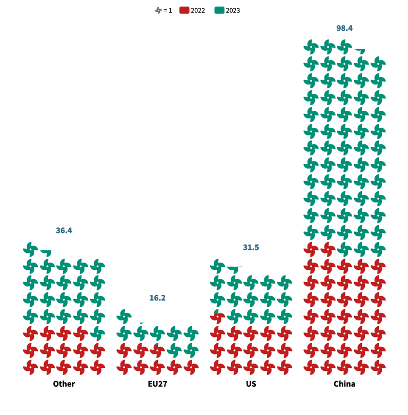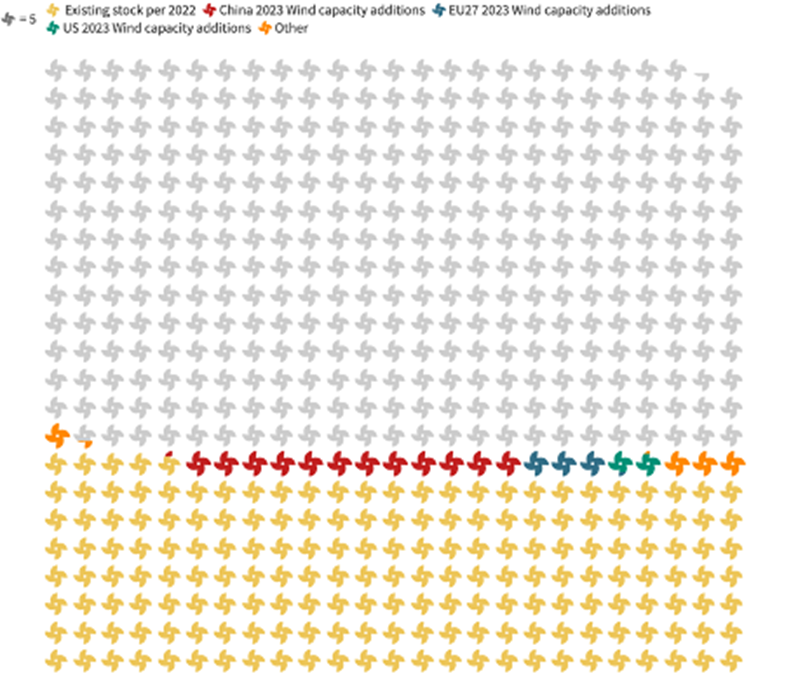Toon has a Master’s Degree in Civil Engineering (major in Energy) from the KU Leuven. He completed a 6 month internship as Derivates Analist. He work as a Junior Climate Consultant for Econopolis Climate and works on advisory projects related to climate & energy. Toon is also founder of Stroomloop, a unique trailrunning experience.
The Winds of Change: Global Wind Capacity Milestones in 2023

Continuing our journey through the renewable energy landscape of 2023, this week we delve into the strides made in wind power, following our recent exploration of solar power advancements. With the latest preliminary data from the International Energy Agency (IEA), we gain further insights into the achievements of wind energy sector, highlighting key trends and accomplishments over the past year.
Capacity additions of Wind turbine installations in the past two years (GW)


In 2023, the spotlight once again shines brightly on China's renewable energy achievements, this time in the realm of wind power. The country set a new benchmark by installing an astonishing 61 GW of wind capacity, an increase of 64.9% from the previous year. This figure is nearly twelve times the total installed wind capacity of Belgium, which stands at 5.2 GW, illustrating the sheer magnitude of China's contribution. Furthermore, when compared to the entire European Union's wind energy installations last year, China's addition was more than seven times the EU's 8.3 GW and nearly four times that of the United States' 15.8 GW. The European Union's total installed wind capacity is around 200 GW, making China's single-year addition equivalent to more than 30% of the entire EU's installed capacity. Such comparisons underscore the significant scale and impact of China's commitment to renewable energy.
2023 additions to the global wind turbine stock compared to the 2030 NZE target (GW)

The global wind capacity now stands at a cumulative total of somewhat more than 1000 GW. Despite this milestone, we find ourselves approximately 36.5% of the way towards the 2030 NZE target of 2742 GW of installed wind capacity. This gap, while daunting, underscores the momentum renewable energy has gained, especially considering that 2023 was a tougher year for offshore wind yet still a record-breaking year for wind power overall. The resilience and continued growth in wind energy installations reflect the sector's potential to overcome challenges and contribute significantly to global climate goals.
Echoing our previous discussions on solar power, the advancements in wind energy further challenge the narrative that singles out China as only a main contributor to emissions. Instead, these developments highlight China's pivotal role in the global shift towards renewable energy. However, it remains essential to balance this acknowledgment with strategic criticism, addressing broader geopolitical and environmental issues. Collaborating with China, while critically assessing and tackling these challenges, will be instrumental in steering towards a more sustainable and cleaner energy future.
